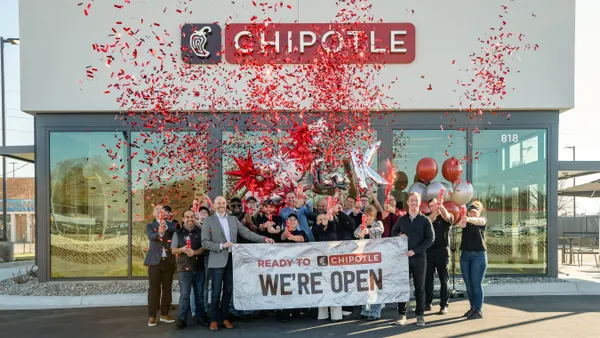Foods like tomatoes and peppers, fresh herbs, finfish, mollusks, soft cheeses and even shell eggs are part of everyone’s menu today (or are, at the very least, are part of everyone’s supply chain). If your suppliers of these foods can’t meet the requirements of the FDA’s FSMA 204 food traceability final rule, will you have to find new suppliers?
These foods and many others appear on the FDA’s Food Traceability List (FTL) and are therefore subject to more traceability recordkeeping than ever before under the FSMA 204 food traceability final rule. The rule requires anyone who manufactures, processes, packs or holds foods on the FTL to collect, organize and store a specific set of Key Data Elements (KDEs) as the product changes hands or changes form. These KDEs must be shared for every shipment. Some KDEs appear on the label; some KDEs cannot appear on the label and instead, need to be sent electronically.
What this means, in short, is that if you have a supplier that can’t provide traceability information…you’re going to have to replace them. Otherwise, as restaurant operator or foodservice distributor, you’re on the hook from a regulatory and legal perspective.
The FDA’s FSMA 204 food traceability final rule is complex, and the impact will be felt far and wide throughout the restaurant industry. In this quick Q&A, you’ll learn what FSMA 204 means for the industry, the truth behind the misconceptions, and how to start your own traceability program ahead of the FDA’s enforcement deadline of January 20, 2026.
What does the FSMA 204 have to do with the restaurant industry?
At its core, FSMA 204 is about taking proactive steps to improve food safety throughout the food supply chain. According to the FDA, the new traceability requirements under FSMA 204 “will allow for faster identification and rapid removal of potentially contaminated food from the market, resulting in fewer foodborne illnesses and/or deaths.”
FSMA 204 requires traceability data or KDEs to be shared between suppliers, distributors and retail restaurant locations. The FDA has prepared this detailed description of what records need to be kept by retail food establishments and restaurants.
Who is responsible for meeting the requirements of FSMA 204?
In the restaurant industry, FSMA requirements apply to EVERYONE that handles food at a Critical Tracking Event (CTE) within the product’s path from farm to table. Specific KDEs are required at each CTE.
Restaurants typically receive foods from various suppliers, and under the FSMA Rule 204, they are required to maintain "receiving KDEs" for at least the foods listed on the FTL. These KDEs must be collected and stored electronically as part of the restaurant’s food safety records. This ensures that if a food safety issue arises, the restaurant can quickly trace back the origins of the affected food, facilitating rapid and effective responses to potential health threats.
What are the misconceptions about traceability?
There are a few widespread misconceptions in the industry that are slowing down adoption of traceability practices.
MISCONCEPTION 1: LABELS CAN DO TRACEABILITY
Labels won’t do traceability, by themselves. That’s because labels can contain some but not all of the FDA-required KDEs. For example…
The following KDEs can be contained on a label:
- The traceability lot code (TLC) for the food
- The product description for the food
- The location description for the TLC source or the TLC source reference
However, when a product is packed and labeled there’s no way of knowing these KDEs:
- The location description for where the food was received
- The location description for the immediate previous source (other than the transporter of the food) for the food
- The reference document type and reference document number
- the quantity and unit of measure of the food
- The date the food was received
MISCONCEPTION #2: THERE’S PLENTY OF TIME TO DO TRACEABILITY
With the FDA’s enforcement deadline for FSMA 204 scheduled for January 20, 2026, many companies to think that they can wait to do traceability. Will the deadline matter if there’s an outbreak? No. If there is an outbreak, the FDA will enforce the law as it stands. Additionally, the FDA has sent a strong signal that the Food Traceability List will only grow, encouraging “voluntary adoption of these practices industry wide.”
It takes time and financial resources to prepare for FSMA 204 compliance. Starting now allows you to spread those resources more evenly over time. By integrating traceability in phases, companies can avoid the operational strain of a one-time overhaul that’s too late in the game. This strategic approach minimizes disruptions and ensures a smoother transition to full compliance.
Keep in mind, too, that with the transmission of this much data, errors will inevitably occur. It will also take time to establish a process to identify, correct and document error resolution.
MISCONCEPTION #3: THERE’S NO LEGAL REASON TO DO TRACEABILITY NOW
The legal threats from traceability were discussed in detail in a recent webinar hosted by ReposiTrak and leading food safety lawyer Shawn Stevens. Here’s a list of important points from the event.
- Each party in the supply chain has a legal obligation under the law – and a duty to the consumer – to ensure that they’re doing their part to collect and share the required information for traceability.
- The FDA is likely to come down first, and heaviest, on the retailer or restaurant where the food was purchased by the end-consumer, because that’s where the traceability culminates and the data is aggregated. The FDA might enforce heavier penalties there to set an example and create a deterrent for other food supply chain companies who have not taken traceability seriously or who have insufficient traceability in place.
- If a retailer chooses to do business with a supplier who refuses to do traceability, then the retailer assumes the risk. If a supplier refuses to do traceability, it’s advisable to find another supplier who will.
- If a company can’t demonstrate compliance with FSMA 204, or if its traceability efforts are determined to be insufficient, the FDA has a powerful set of remedies that it can and will deploy.
What's the first step restaurants and foodservice distributors should take to meet the requirements of FSMA 204?
You can’t do traceability without data from your trading partners. Therefore, the critical first step to meeting the requirements of FSMA 204 is to create a connection with each trading partner to understand what KDEs they have and how they can share their KDEs with you.
You can do this work on your own or with an established solution like the ReposiTrak Traceability Network, the world’s only operating traceability network that already includes hundreds of supplier connections with thousands more in the queue.
To learn more about traceability and the ReposiTrak Traceability Network, contact ReposiTrak today










